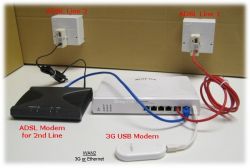We are launching this year and new contenders are arriving in the virtual reality market, Lenovo being one of the first to make an appearance at CES 2017 under the Windows Holographic platform.
This viewer uses two screens of 1440×1440 pixels, which gives it a higher resolution than HTC Vive and Oculus Rift. In addition, the weight of the device is also noticeably lower, falling by about 350 grams, and uses built-in cameras for positioning, as did the prototype Santa Cruz Oculus shown in the Connect, although the viewer Lenovo requires to be connected to a PC for operation. In addition to being lighter than currently available commercial headsets, Lenovo employs a fastening system similar to that of PlayStation VR, which in our opinion is the most comfortable of the three devices released in 2016.
Unfortunately, the units presented in the CES were not operational, so that the wizards have only been able to test the comfort and ergonomics of the viewers but without reaching them, with what it is still early to talk about the quality of the positioning, the image itself or the FOV, so we’ll have to wait some more time to find out. Nothing is known about motion controllers either, and everything indicates that Lenovo is not going to manufacture them and it will be necessary to acquire devices compatible with the Windows Holographic platform. Could it be a new opportunity for PrioVR or Sixense STEM?
As for the software, according to Lenovo all the applications in the Windows Store will work in the form of a floating screen before us, and there will be several HoloLens applications that will work on this platform, since the cameras integrated in the viewfinder can be used to use it in augmented and mixed reality. Not a word at the moment about games and SteamVR. There are no specific data known about the availability and the price, only that it will be around between $ 300 and $ 400 and will arrive throughout this year.









